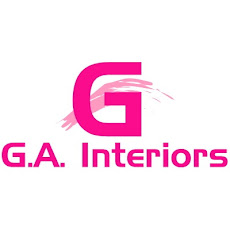1) FUNDAMENTALS
As with any first meeting, you need to make sure you’ve covered the basics, such as: dress smartly and arrive on time.
Usually you’ve spoken to the client beforehand, to arrange the appointment, and gained an insight into why they’ve called on your services, eg: modernize the lounge or prepare the property for sale.
You should also have an understanding of the size of the property and the number of people living in the property.
From this information you are able to assess any support material that you need to bring with you for the initial consultation, eg: colour charts or examples of previous similar work.
2) INITIAL THOUGHTS
Once you arrive near the property you should start assessing the local area as this will give you an indication of the types of shops and products locally available to your client.
It will also give you a good indication of the property sizes and styles, and also how their neighbours have altered and styled their homes.
The front of your client’s property gives you a first glance into your client’s lifestyle. You need to think about why they’ve chosen to live where they are and what makes the property special to them?
You need to consider what the frontage of the property says about the homeowner because this is part of the overall design for your client’s property.
Remember, FIRST IMPRESSIONS COUNT.
Not only do you want to style the client’s home so that it has magic and sparkle once you enter the property, but you should also consider adding that ‘WOW’ factor right from street level.
This is particularly important when a property is being sold and is often referred to as ‘curb appeal’.
If a potential buyer doesn’t like the outside of a property then they could drive on by without even going into the property.
3) MAKE A CONNECTION
Once inside the property, particularly if the client lives there, you should start to assess the way that the client lives in order to appreciate their lifestyle, likes and dislikes.
You need to appreciate how the client lives on a daily basis so that you understand the use of space in the property and where the key problems lie.
For a consultation where the property is being sold, you need to understand not only how the current residents live in the property but also the potential of the property for how future buyers could live in the property. You then need to think about how you can maximize the property to appeal to those prospective buyers.
If the client lives in the property you can assess the furniture, soft furnishings, accessories and décor that are currently in place. Review this alongside how the client dresses. This may seem strange, but it enables you to see if there’s a link in styles or a complete mismatch.
The key is to understand your client. You need to know their past tastes, likes and dislikes as well as their current dreams and wishes.
Sometimes a client will keep specific items that you need to incorporate into your new design or they will have a total refresh of everything.
Your new design should include all parties that live in the property; this includes any partner, children and animals. Your design should be flexible enough for the needs of all of the family members.
When I initially visit a new property and a new client, I spend a few moments chatting to the client and any other family members that are present in the property. This enables me to make a connection with my client so that they feel comfortable with me asking questions about their lives, likes and dislikes.
Once we’ve spent a few moments together, I’ll ask them to show me around the property or the room in question. At this point I’m assessing how the client lives currently, where the problems lie in the current use of space and how the potential of the property can be maximized.
All the time I’m formulating ideas and suggestions in my mind of how it could look to achieve the client’s, or potential buyers, dreams and aspirations.
I use my years of experience and design knowledge to assess flooring, wall treatments, window treatments, furniture + furniture layout, lighting, accessories, storage solutions, colour scheme and overall design style.
4) SUMMARY
Once we’ve reviewed the property, I’ll verbally present my initial ideas and concepts to the client.
We review my initial ideas so the client is assured that I understand their requirements and gets clarification on any individual points.
It’s my opportunity to explain the design principles behind my creative design scheme and to take the client ‘out of the box’. I explain to the client what could be achieved and match this to their dreams and aspirations.
5) NEXT STEPS
We provide flexible solutions and work with the client as much or as little as they feel necessary.
For the clients that are time poor we manage the whole project, whilst others are happy to source products and manage trades themselves so we provide them with ad-hoc consultation for when they get stuck.
Some clients need to visualize with one of our mood boards whilst others prefer a written overview.
One of the most important comments our clients have made is that we follow up and communicate with them so that their projects are kept on track and they stay focused on achieving the dream.
If you or anyone you know would like a unique experience with one of our designers then just contact us today:


